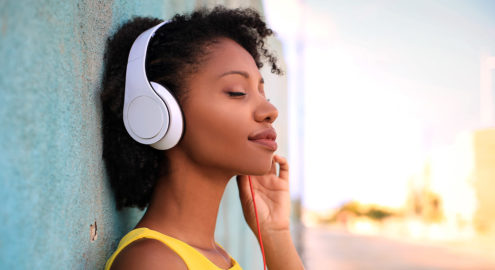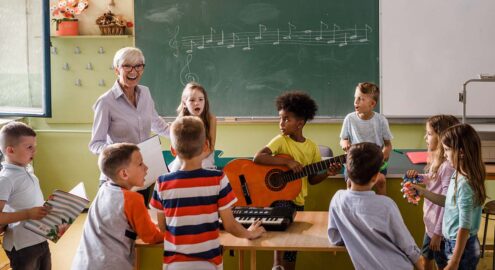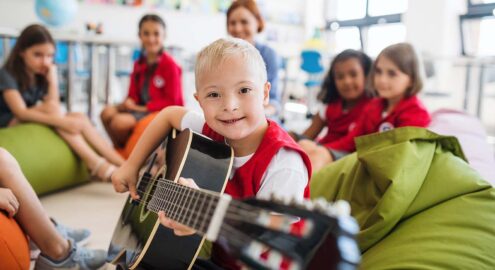Evidence That It Works
A study conducted with 3rd and 4th grade Canadian students found that students who participated in group music training (versus a control group) developed higher levels of sympathy and had enhanced pro-social skills. The training centered on learning to play the ukulele, with direct instruction to “help their neighbor.”
Another longitudinal study conducted with British students ages 8-11 found that participating in musical games, such as improvising rhythm as a group, over the course of nine months are beneficial for developing empathy and understanding in children, and can improve social and emotional abilities.
Why Does It Matter?
One of the sources of awe for people across the world is music. Scientists have found that when we experience music that deeply impacts us, the brain’s dopamine pathway is activated which allows the mind to experience awe, wonder, and exploration—important keys to learning.
Furthermore, music can also help foster a sense of belonging among students because we find resonance in the sounds of our culture, and begin to appreciate our individual identity as a part of a larger group, place, or collective identity.
Listening to music with peers can also foster students’ connection with each other by eliciting synchrony not only with the music but also between individuals participating in the same musical experience. Additionally, music improves students’ social-emotional skills by enhancing their ability to recognize, understand, and regulate emotions, and by cultivating their empathy for others—an important skill for reducing bullying.










Comments